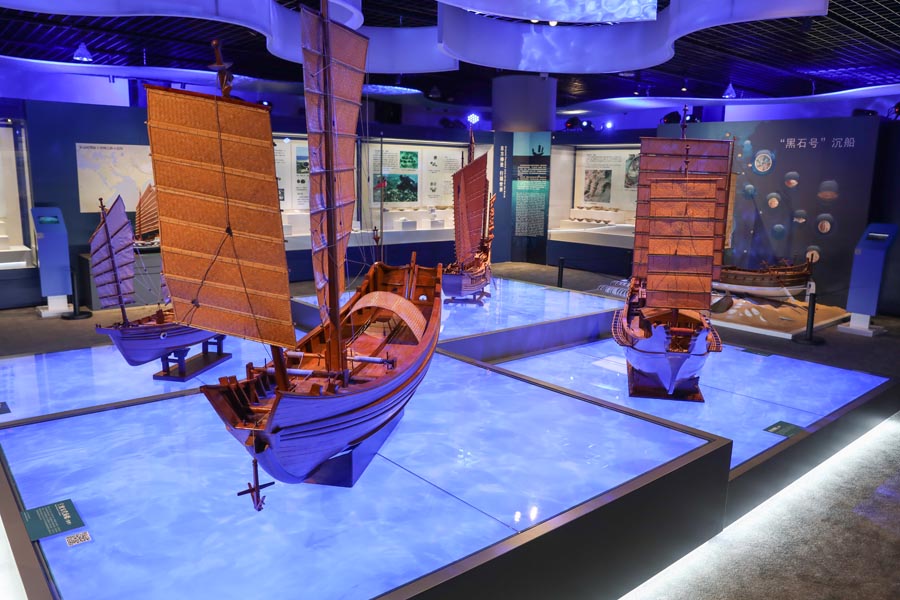 |
|
The exhibition at the China Maritime Museum in Shanghai features more than 240 objects and models (above) related to ancient ship-building techniques. [Photo provided to China Daily] |
The exhibition was jointly created by the China Maritime Museum, the Nanjing Museum Administration in Jiangsu province and the Ningbo Museum in Zhejiang province. It was presented first at the Nanjing Museum from Sept 28 to Dec 28 last year, and then at the Ningbo Museum from Jan 19 to April 8. "Shanghai is the final stop for our exhibition," says Cao Zhijun, director of the Nanjing Museum Administration. "We received 220,000 visitors in Nanjing and 170,000 in Ningbo.
"The exhibition that took us two years to put together has won praise from both academic circles and the visiting public. It was also shortlisted for the top 10 quality exhibitions in China this year."
One of the shipwrecks was found in Batu Hitam. It is estimated that the Arabian ship was sailing from China's Yangzhou to a harbor in Iraq and sank around the year 830, according to professor Qi Dongfang from Peking University. It was discovered off the coast of Batu Hitam in Indonesia and excavated by Tilman Walterfang, a treasure hunter from Germany. More than 67,000 objects were salvaged from the shipwreck, 98 percent of which were ceramic.
Findings from the shipwreck contained so much information that Qi observed that "the Batu Hitam shipwreck is akin to a museum".
"It tells about the technology of porcelain making in the ninth century, and how new forms, patterns and methods were developed because of international trade," he explains.